Complete Guide to Fort Bowie National Historic Site in Arizona, including history, things to see and do, hours, how to get to the park, hiking, and so much more.

Fort Bowie National Historic Site
Fort Bowie National Historic Site in Arizona protects a fort that was in use from 1868 to 1894. The fort was a military outpost during the Apache wars of the late 19th century. Today the park carefully preserves the ruins of Fort Bowie.
About Fort Bowie National Historic Site
Today the Fort helps tell the story of the bitter conflict between the Chiricahua Apaches and the United States military.
For more than 30 years Fort Bowie and Apache Pass were the focal point of military operations eventually culminating in the surrender of Geronimo in 1886 and the banishment of the Chiricahua's to Florida, Alabama, and later Oklahoma.
It was the site of the Bascom Affair, a wagon train massacre, and the Battle of Apache Pass, where a large force of Chiricahua Apaches under Mangus Colorados and Cochise fought the California Volunteers.
Getting to the park is part of the adventure! The last few miles to the park are unpaved road. You will be passing through the Apache Pass Road.
Once you reach the park you will need to decide if you want to take a 1.5 mile hike each way to the visitor center or use the access road to the park.

Is Fort Bowie National Historic Site worth visiting?
Fort Bowie National Historic Site is a peaceful and tranquil destination that allows visitors to escape the busyness of daily life and connect with nature. It is a great place for history buffs, nature enthusiasts, and anyone seeking a peaceful escape.
We really enjoyed our visit to Fort Bowie NHS.

History of Fort Bowie National Historic Site
Fort Bowie National Historic Site preserves the ruins of Fort Bowie, where in the latter half of the 1800s, it served as the main outpost for the U.S Military. Fort Bowie and the Apache Pass were at the center of a conflict between American settlers and the Chiricahua Apache, known as the Apache Wars.
The Fort Bowie National Historic Site preserves the site of the Bascom affair, a massacre that happened on January 27th, 1861. The massacre triggered the Apache Wars, which raged in the area for almost thirty years.
The National Historic Site also preserves the site of the Battle of Apache Pass, which began on July 15th and ended on July 16th, 1862. The battle was fought between the California Volunteers and the Chiricahua Apache.
These two incidents led to the building of a permanent U.S. military outpost in the region in 1862 by the 5th Regiment of California Volunteers.
The Bascom Affair
On January 27th, 1861, the farm of John Ward was raided by members of the Apache tribe. The raiding Apache took livestock and John Ward's stepson, 12-year-old Felix. Ward reported the incident to the nearest U.S Army outpost.
The army sent George Nicholas Bascom to track down those who had been involved in the raid and retrieve Felix. Ward told Bascom he saw the Apache head towards the Chiricahua Mountains, so it was presumed those responsible were members of the Chiricahua Apache tribe. It was in fact, members of the Coyotero Apache that had initiated the raid.
Bascom and his men failed to locate Felix or the missing livestock. They did, however, encounter the Chiricahua Apache and their leader, Cochise. Bascom demanded the boy be returned and took Cochise and his family hostage until Felix was released.
While Cochise managed to escape, members of his family were hanged by Bascom and his men. In retaliation for the murder of his family, Cochise ordered riads and murders across the region. It was this that began the Apache Wars.
The Battle of Apache Pass
The Battle of Apache Pass occurred during the American Civil War. However, this battle was not between the Union and the Confederates. The Battle of Apache Pass was between the Union and the Chiricahua Apache.
Ambush at the Apache Pass
Captain Roberts and 100 soldiers who made up the 5th Column of California Volunteers were ordered to march West. Their orders were to guard key military targets from potential Confederate attacks. Their journey took them through the Apache Pass, which they reached on July 15th.
As the soldiers made their way through the pass towards a spring, Roberts and his men came under attack. Over 150 Apache Warriors, led by Cochise, ambushed the soldiers. A fierce fight ensued, and Robert's men managed to push the Apache back up the hillside. The Apache had built temporary stone breastworks on the hillside in preparation for the ambush.
The Apache knew the U.S soldiers would still need to visit the spring as they desperately needed water. Roberts knew his men would have to fight their way to the spring.
Roberts divided his men into two groups. One group made their way to the spring, with cannon fire aimed at the top of the canyon, while the other group protected the Howitzers. Despite the canon fire, the Apache Warriors managed to halt the army's advance.
The Howitzer fire had little effect on the entrenched Apache, so Roberts attempted to push the Howitzers up the hillside. As a result, the Howitzers turned upside down and could not be fired. Roberts instead, sent his infantry up the hillside to charge the Apache in their make-shift fortifications.
By the end of the first day, Roberts's men managed to advance up the hillside to the Apache position. The Warriors abandoned their fortifications on the hill but continued to fight the army for a second day. The following day, on July 16th, the Warriors had no choice but to retreat.
Fort Bowie
The first fort constructed on the site which is now the Fort Bowie National Historic Site was more like a temporary camp than a fort. The permanent fort was built in 1868 when it became clear the hostilities between the Apache and Americans would not be drawing to a close anytime soon.
Fort Bowie was built on a remote plateau, only a few hundred yards from the original site of the temporary camp. Fort Bowie included several houses, a trading post, stables, and a hospital. The fort was occupied continuously from its construction in 1868 until 1894, when it was abandoned.
Fort Bowie was the hub of military activity during the decades-long Apache Wars. Battles were fought from Southern Arizona to New Mexico. The conflict came to an end in 1886 with the surrender of Geronimo.
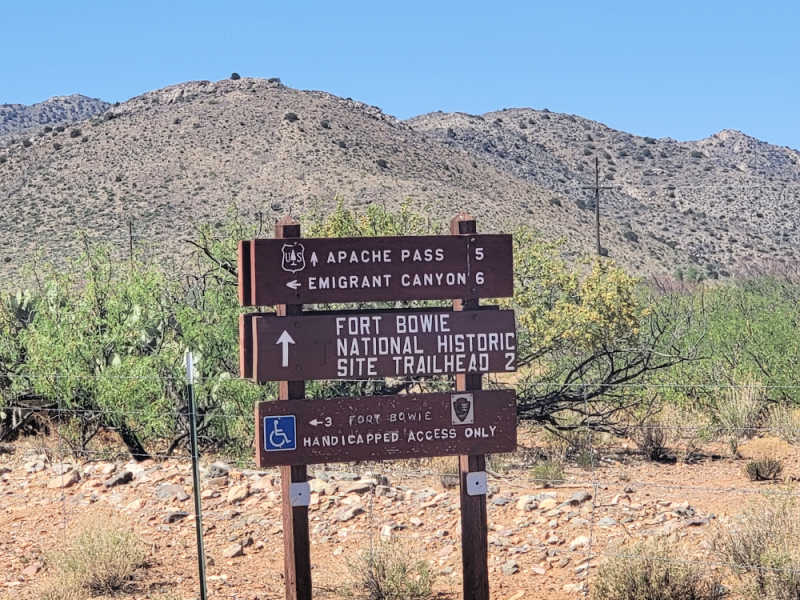
Things to know before your visit to Fort Bowie National Historic Site
Entrance fee
$0.00, there is no charge to visit the park
Learn more about National Park Passes for parks that have an entrance fee.
$80.00 - For the America the Beautiful/National Park Pass. The pass covers entrance fees to all US National Park Sites and over 2,000 Federal Recreation Fee Sites for an entire year and covers everyone in the car for per-vehicle sites and up to 4 adults for per-person sites.
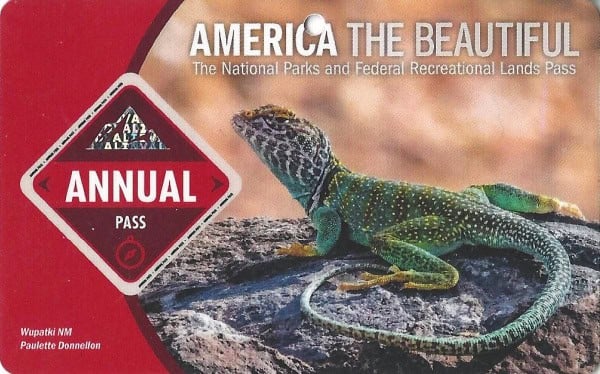
Buy your pass at this link, and REI will donate 10% of pass proceeds to the National Forest Foundation, National Park Foundation, and the U.S. Endowment for Forestry & Communities.
National Park Free Entrance Days -Mark your calendars with the five free entrance days the National Park Service offers annually.
Time Zone
Mountain Time Zone
Pets
Pets are allowed but not inside the buildings. Must be kept on a leash no longer than 6 feet at all times.
Cell Service
Limited cellular service at the park visitor center and no cellular service on park grounds and trails.
Park Hours
The park is open daily from Sunrise to Sunset.
Wi-Fi
There is no public Wi-Fi
Insect Repellent
Insect repellent is always a great idea when outdoors, especially if you are around any body of water.
We use Permethrin Spray on our clothes before our park trips.
Water Bottle
Make sure to bring your own water bottle and plenty of water with you. Plastic water bottles are not sold in the park.
Parking
There are two parking options for Fort Bowie NHS.
The main parking area includes a 3-mile round trip hike to reach the visitor center. This hike does not have a ton of shade so you will want to be prepared to walk in the Arizona desert with hot sun.
The second parking area is accessible via the Handicap access road. There is a dirt road that leads to the ADA parking area.
The road dead ends at the administrative area of the park and there is a small parking area. From here there is still a 500 foot long dirt trail that travels to the visitor center.
If you or someone with you is unable to climb steps you can call the park and have them open the gate to drive to the visitor center.
There is no parking in the administrative area for RVs, trailers, or buses.
Food/Restaurants
There are no restaurants within the park.
Gas
There are no gas stations within the park.
Drones
Drones are not permitted within National Park Sites.
National Park Passport Stamps
National Park Passport stamps can be found in the visitor center.
Fort Bowie NHS is part of the 2012 Passport Stamp Set.
We like to use these circle stickers for park stamps so we don't have to bring our passport book with us on every trip.
The National Park Passport Book program is a great way to document all of the parks you have visitied.
You can get Passport Stickers and Annual Stamp Sets to help enhance your Passport Book.
Electric Vehicle Charging
There are 3 electric vehicle charging stations within a 30 mile radius of Willcox, AZ. The closest EV charging station to the park is at the Holiday Inn Express & Suites Willcox, 35 miles away.

Details about Fort Bowie National Historic Site
Size - 1000 acres
Check out how the park compares to other National Parks by Size.
Date Established
July 29, 1972
Visitation
In 2021, Fort Bowie NHS had 9,280 park visitors.
In 2020, Fort Bowie NHS had 6,456 park visitors.
In 2019, Fort Bowie NHS had 7,577 park visitors.
Learn more about the most visited and least visited National Parks in the US
National Park Address
3500 South Apache Pass Road, Bowie, Arizona 85605
Fort Bowie National Park Map

Where is Fort Bowie National Historic Site?
Fort Bowie National Historic Site is situated in the southeastern region of the state of Arizona, in close proximity to the present-day town of Willcox.
Estimated distance from major cities nearby
- Tucson, AZ - 120 miles
- El Paso, TX - 225 miles
- Mesa, AZ - 230 miles
- Phoenix, AZ - 230 miles
- Ciudad Juarez, Mexico - 235 miles
- Albuquerque, NM - 350 miles
- Hermosillo, Mexico - 320 miles
- Las Vegas, NV - 600 miles
Estimated Distance from nearby National Park
Saguaro NP - 110 miles
Petrified Forest NP - 300 miles
Joshua Tree NP - 450 miles
Grand Canyon NP - 450 miles
Zion NP - 600 miles
Where is the National Park Visitor Center?
The visitor center is located near the ruins of the second fort. It is best accessed via the Fort Bowie Trail.

Getting to Fort Bowie National Historic Site
Closest Airports
- Tucson International Airport (TUS)
International Airports
- Phoenix Sky Harbor International Airport (PHX)
- El Paso International Airport (ELP)
Regional Airports
- Safford Regional Airport (SAD)
- Marana Regional Airport (AVQ)
Driving Directions
From Willcox, AZ / points west on I-10: Drive 23 miles east of Willcox on Interstate 10 to the the town of Bowie. Exit at the first Bowie exit and drive through the town. Follow the signs for Fort Bowie National Historic Site and turn south on Apache Pass Road. Drive 13 miles to the Fort Bowie Trailhead (the last mile of the road is unpaved). Be prepared to walk the three miles round trip to the ruins and back to your car.
From Lordsburg, NM / points east on I-10: Drive 50 miles west of Lordsburg on Interstate 10 to the town of Bowie. Exit at the first Bowie exit and drive through the town. Follow the signs for Fort Bowie National Historic Site and turn south on Apache Pass Road. Drive 13 miles to the Fort Bowie Trailhead (the last mile of the road is unpaved). Be prepared to walk the three miles round trip to the ruins and back to your car.
From Chiricahua National Monument: Take highway 181 west to the junction of highway 186 and turn right/north. Follow 186 to Apache Pass Rd and turn right onto the unpaved road. Follow Apache Pass Rd for 8 miles to the Fort Bowie trailhead.
The park is 116 miles east of Tucson, AZ via I-10, and 227 miles from Phoenix, AZ.

Best time to visit Fort Bowie National Historic Site
It's better to visit in the spring or fall because of the mild and comfortable weather during these times of year. Summers can be really hot and dry, while winters can be extremely cold. As for hiking and exploring the park, spring and fall are usually the best months for the weather.
Weather and Seasons
The warmest weather starts from May 25th to September 17th, with an average daily high temperature above 94 degrees.
The coldest weather starts from November 22nd to February 28th, with an average daily high temperature below 72 degrees.
The coldest month is December, with an average low of 43 degrees and high of 66 degrees.
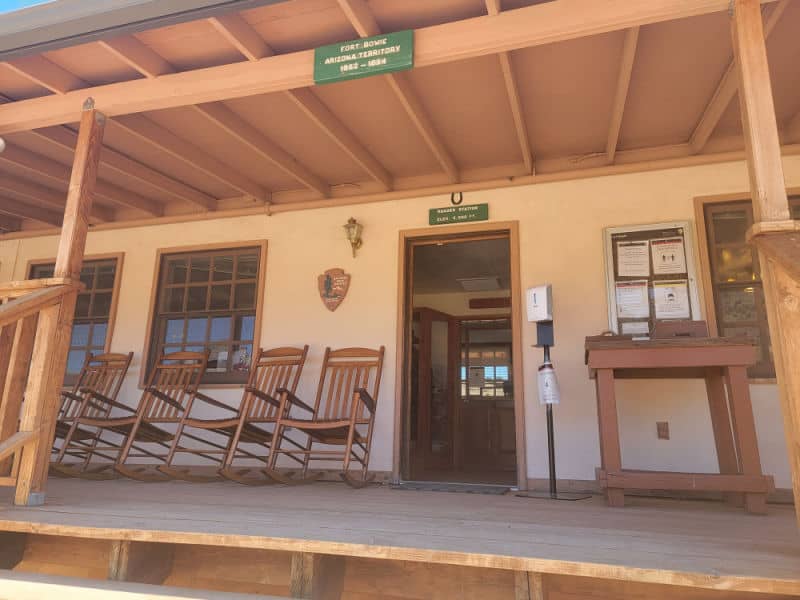
Best Things to do in Fort Bowie National Historic Site
We suggest planning a minimum of a few hours to explore the park especially if you plan to hike in from the main parking area.
Visitor Center
The visitor center has an amazing porch with rocking chairs that are great for looking out over the fort site.
Inside the visitor center, there is a collection of artifacts that have been found on the site.
From the visitor center, you can wander through the historic fort and see the adobe walls that remain from the historic fort.

Non-Hiking access to the Visitor Center
If you are not excited to hike 3-miles to the visitor center don't worry there is another option. There is an ADA accessible access to the visitor center.
There are signs on Apache Pass Road that designate the ADA route. Once you reach the parking lot there is still a 500-foot trail along an uneven pathway and stairs. The path to the visitor center does go up about 80 feet in elevation gain.
If you are unable to climb stairs or walk on an uneven trail you can contact the visitor center to have them open the gate. Once the gate is open you can drive to the visitor center to have easier access.
The option of opening the gate is only available for visitors who are not able to reach the visitor center without assistance.
I will say that the walkway to the visitor center is uneven. If you have any knee or mobility issues you may want hiking poles, your cane, or someone with you.
Junior Ranger Program
The Junior Ranger program can be picked up at the visitor center. It is a fantastic way for visitors of all ages to learn more about the park.
Bird Watching
This is one of the most popular activities in Fort Bowie National Historic Site, as it is home to a wide variety of species of birds. It is known to have a record of almost 150 species of birds, making it a great spot for bird watching at any time of the year.
Camera Gear we use
We are big fans of using great camera gear to get amazing photos while traveling.
Canon R5 - We recently upgraded to the R5 after using a Mark 5 for years. We are loving the camera shutter speed and quality of images.
Canon 100 - 500mm - We use the Canon 100-500 for wildlife photography.
Camera Rain Cover - A rain cover will help protect your camera during rain showers but also when photographing waterfalls.
Camera Cleaning Kit - Cameras can get dirty, beat up, and dusty while in the parks. We like having a cleaning kit with us so we can do on the spot touch ups.
Extra Camera Batteries - We suggest always having one or two extra camera batteries with you. There is nothing worse than going to take a shot and the battery dies.
Extra Memory Cards - We use Extreme PRO SanDisk cards

Hiking in Fort Bowie National Historic Site
Always carry the 10 essentials for outdoor survival when exploring. The park has a Hike Through History program that you can earn an award for hiking in Fort Bowie NHS.
Visitors can pick up a hiking log at the visitor center. Each hiker must hike a minimum of 3 miles within the park.
Each hiker needs to take a selfie or have a photo taken on each trail they hiked. It is worth knowing the park is at 5,000 feet in elevation.
Hike to the Visitor Center
The park suggests taking a 3-mile round trip hike from the parking lot to the visitor center. This hike has approximately a 200-foot elevation gain and is considered moderate by the park.
There is little to no shade along the trail! You will want to be prepared for uneven ground, heat, and wildlife along the way. Please make sure you bring the ten essentials with you.
If you choose to do the hike, you will pass by the site of the Bascom Affair, the site of the Battle of Apache Pass, Apache Springs, Butterfield Stage Station, the old post cemetery, and an Apache wikiup, Apache Spring before reaching the 1st and 2nd fort.

How to beat the crowds in Fort Bowie National Historic Site?
We did not experience any crowds while in the park. We saw maybe 2 other visitors during our time exploring.
Where to stay when visiting Fort Bowie National Historic Site
There are no National Park Lodges within the park.
Nearby Lodging includes:
Holiday Inn Express & Suites Willcox - free breakfast buffet, dry cleaning/laundry services, and a gym at Holiday Inn Express & Suites Willcox, an IHG Hotel. In addition to a business center, guests can connect to free Wi-Fi in public areas.
OYO Hotel Rose's Willcox - Guests can connect to free in-room Wi-Fi. All 20 individually furnished rooms feature comforts such as air conditioning
Days Inn by Wyndham Willcox - free continental breakfast, a grocery/convenience store, and laundry facilities. Free in-room Wi-Fi is available to all guests, along with a fireplace in the lobby and a 24-hour business center.
Super 8 by Wyndham Willcox - free to-go breakfast, laundry facilities, and a hot tub. Stay connected with free in-room Wi-Fi.
Click on the map below to see additional lodging and vacation rentals near the park.
Camping
There is no camping within the park. There is camping available at the Bonita Canyon Campground in Chiricahua National Monument 25 miles away.
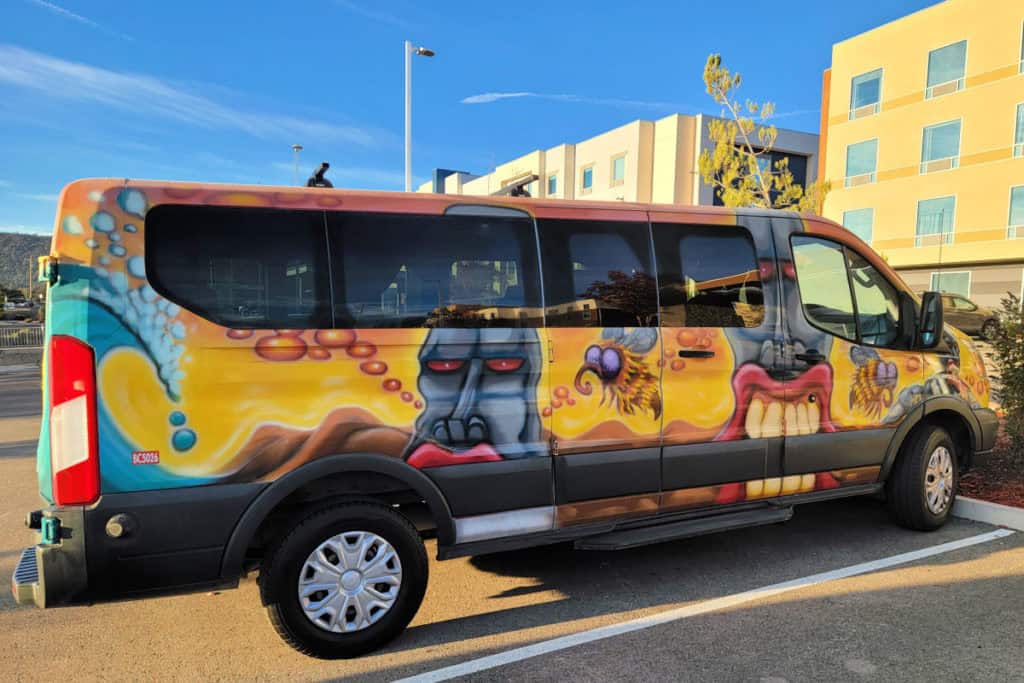
For a fun adventure check out Escape Campervans. These campervans have built in beds, kitchen area with refrigerators, and more. You can have them fully set up with kitchen supplies, bedding, and other fun extras. They are painted with epic designs you can't miss!
Escape Campervans has offices in Vancouver, Seattle, Portland, San Francisco, Las Vegas, Los Angeles, Phoenix, Salt Lake City, Denver, New York, and Orlando

Parks Near Fort Bowie National Historic Site
Tumacacori National Historical Park
Hohokam Pima National Monument
Tonto National Monument
Check out all of the great Arizona National Parks and neighboring National Parks in New Mexico and National Parks in California.
Check out how many national park sites are in the US!
Check out all of the US National Historic Sites managed by the NPS
Make sure to follow Park Ranger John on Facebook, Instagram, Pinterest, and TikTok

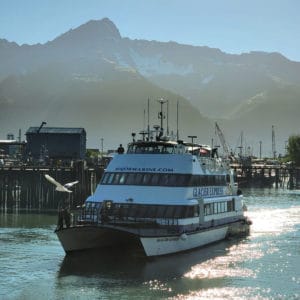

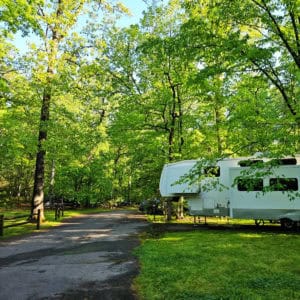

Leave a Reply